African Violets Definitely Achievable!
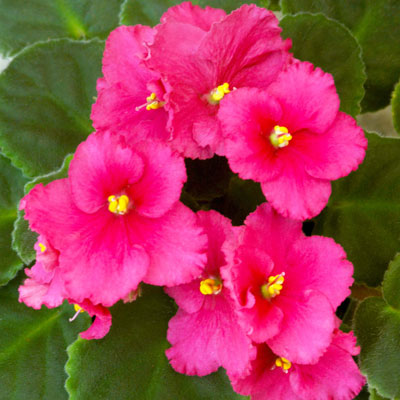
Photo: African violets are a great way to cheer up the winter.
The entire Gesneriad plant family is thought of as being difficult for average gardeners to grow. To some degree, that reputation is totally earned. African violets are the queens of the family, and it doesn’t take much to throw them off kilter. However, I’ve found a few small tricks that have really helped me, and here they are.
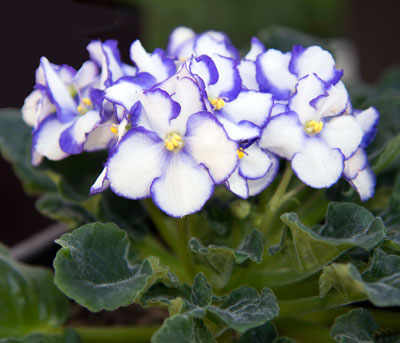
Photo: This is a Sperry family African violet, now in its second year in our home.
• Bright light. These are not plants for dark corners. I keep ours in an east window. In summer I pull them back away from the glass by 8 or 10 inches to get them out of the intense rays, then I move them back in the winter. I rotate them every week to keep the leaves symmetrical and vigorous.
Personally I’m not a big fan of growing plants under artificial lighting. It’s too contrived for my tastes, but if that’s the only way you can grow African violets, use fluorescent “grow” lights positioned just 3 or 4 inches above the leaf surfaces.
• Lechuza self-watering pots. I learned about these from my friend Jimmy Turner, then of the Dallas Arboretum and now with the Royal Botanic Gardens in Sydney, Australia. Jimmy had several violets growing and blooming in Lechuzas. I asked him about the unusual containers, and he said, “Oh, they’re terrific. I never could grow African violets before I got them, and now just look at them.” (In full bloom.)
Lechuzas use a very porous potting soil that comes with the pots. They have heavy, fibrous wicks that soak up the water and distribute it uniformly throughout the soil. I was never taken by self-watering pots, but these are different. While they’re unusually shaped and strangely colored, Lechuzas do produce great results. They’re expensive, but I think they’re worth it for very special plants. Here is the web page from which I order.
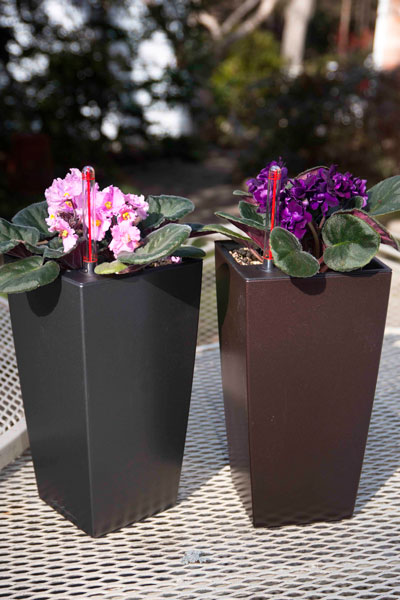
Photo: Newly potted African violets in vertical, self-watering Lechuza pots.
• Porous potting soil is critical. I use the mix that comes with the Lechuzas. As I mentioned, it’s very well-draining. However, in those situations when I need to mix up more, I’ll use a top-quality potting soil blended with 20 percent fine aquarium gravel or expanded shale. African violets’ fibrous roots are intolerant of waterlogged soils.
• I use room-temperature water. Cold water in winter spots their leaves badly. Even with the room-temperature water, I try to keep it away from their foliage. I used a small watering can with a long spout for a good while, but when it turned up missing, I switched to a soft-sided plastic cup I could squeeze and form into a pouring spout.
• Water-soluble fertilizer with a relatively high proportion of nitrogen has worked well for me. I apply it in very diluted solution each time that I refill the Lechuzas’ water reservoirs.
• When my plants become overcrowded, I carefully lift them out and cut or break them apart into small transplants. I pot the transplants into new Lechuza pots and put them into bright light to grow and fill in.
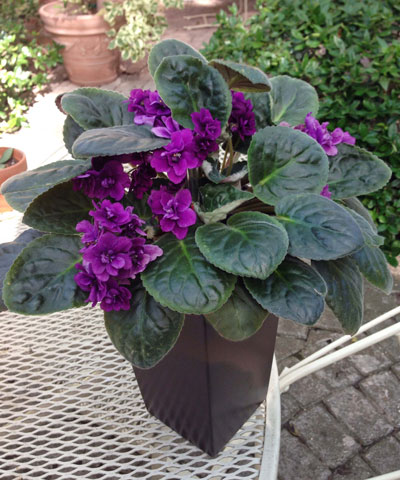
Photo: Crowded African violet plant is ready to be divided and repotted.
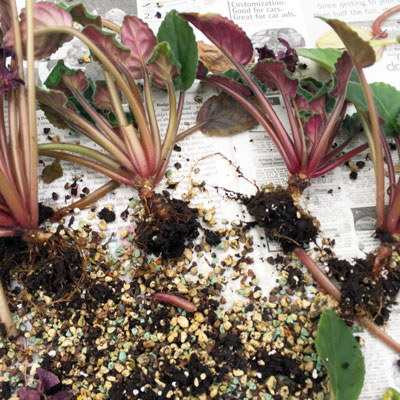
Photo: One clump of an African violet plant can quickly yield a multitude of offsets.
